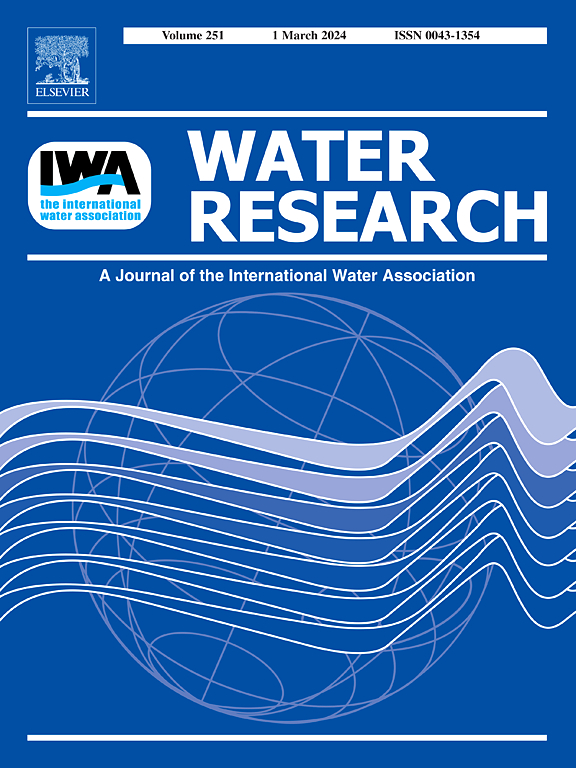Unraveling the links between molecular weight and multidimensional dynamics of dissolved organic matter in the runoff from gentle sloping land under rainfall
IF 12.4
1区 环境科学与生态学
Q1 ENGINEERING, ENVIRONMENTAL
引用次数: 0
Abstract
Molecular weight is a fundamental intrinsic property of dissolved organic matter (DOM), playing a crucial role in its bio-stability, microbial transformation, and contributions to regional carbon cycling. However, the complex relationships between the molecular weight and multidimensional dynamics of DOM in the runoff remain insufficiently understood. In this study, fourier transform ion cyclotron resonance mass spectrometry (FT-ICR MS) was employed to elucidate the associations between molecular weight and multidimensional dynamics of DOM in surface runoff and subsurface runoff from gentle sloping land (i.e. bare land and farmland). Overall, DOM-bacteria bipartite network analysis revealed a more complex co-occurrence network in subsurface runoff from farmland, with interaction strength rising alongside molecular weight. Furthermore, null modeling from different perspectives, including molecular characteristics, biochemical transformations, and a comprehensive perspective, revealed that the DOM compositional assembly processes in runoff was dominated by deterministic processes, particularly variable selection, with variation also linked to molecular weight. Notably, variable selection always dominated the assembly process of DOM potential transformation despite the scale-dependent effects affecting the assembly process of DOM molecular characteristics. Therefore, the relationship between DOM molecular weight and its dynamics may vary across microbial communities and geographic scales. Overall, these findings not only help to deepen the understanding of the role of DOM in natural ecosystems, but also provide an important reference for the study of soil carbon cycling, biogeochemical cycling and microbial ecological processes.
揭示降雨下缓坡地径流中溶解有机质的分子量和多维动态之间的联系
分子量是溶解有机物(DOM)的基本性质,在其生物稳定性、微生物转化和区域碳循环中起着至关重要的作用。然而,径流中DOM的分子量与多维动态之间的复杂关系尚不清楚。本研究采用傅里叶变换离子回旋共振质谱(FT-ICR MS)分析了缓坡地(即裸地和农田)地表径流和地下径流中DOM的分子量与多维动态关系。总体而言,dom -细菌双部网络分析揭示了农田地下径流中更复杂的共发生网络,相互作用强度随着分子量的增加而增加。此外,从分子特征、生化转化和综合角度进行的零模型分析表明,径流中DOM成分组装过程主要是确定性过程,特别是变量选择,其变化也与分子量有关。值得注意的是,尽管DOM分子特征的组装过程存在尺度依赖效应,但变量选择始终主导着DOM势转化的组装过程。因此,DOM分子量与其动力学之间的关系可能在不同的微生物群落和地理尺度上有所不同。总的来说,这些发现不仅有助于加深对DOM在自然生态系统中的作用的认识,而且为土壤碳循环、生物地球化学循环和微生物生态过程的研究提供了重要参考。
本文章由计算机程序翻译,如有差异,请以英文原文为准。
求助全文
约1分钟内获得全文
求助全文
来源期刊

Water Research
环境科学-工程:环境
CiteScore
20.80
自引率
9.40%
发文量
1307
审稿时长
38 days
期刊介绍:
Water Research, along with its open access companion journal Water Research X, serves as a platform for publishing original research papers covering various aspects of the science and technology related to the anthropogenic water cycle, water quality, and its management worldwide. The audience targeted by the journal comprises biologists, chemical engineers, chemists, civil engineers, environmental engineers, limnologists, and microbiologists. The scope of the journal include:
•Treatment processes for water and wastewaters (municipal, agricultural, industrial, and on-site treatment), including resource recovery and residuals management;
•Urban hydrology including sewer systems, stormwater management, and green infrastructure;
•Drinking water treatment and distribution;
•Potable and non-potable water reuse;
•Sanitation, public health, and risk assessment;
•Anaerobic digestion, solid and hazardous waste management, including source characterization and the effects and control of leachates and gaseous emissions;
•Contaminants (chemical, microbial, anthropogenic particles such as nanoparticles or microplastics) and related water quality sensing, monitoring, fate, and assessment;
•Anthropogenic impacts on inland, tidal, coastal and urban waters, focusing on surface and ground waters, and point and non-point sources of pollution;
•Environmental restoration, linked to surface water, groundwater and groundwater remediation;
•Analysis of the interfaces between sediments and water, and between water and atmosphere, focusing specifically on anthropogenic impacts;
•Mathematical modelling, systems analysis, machine learning, and beneficial use of big data related to the anthropogenic water cycle;
•Socio-economic, policy, and regulations studies.
 求助内容:
求助内容: 应助结果提醒方式:
应助结果提醒方式:


